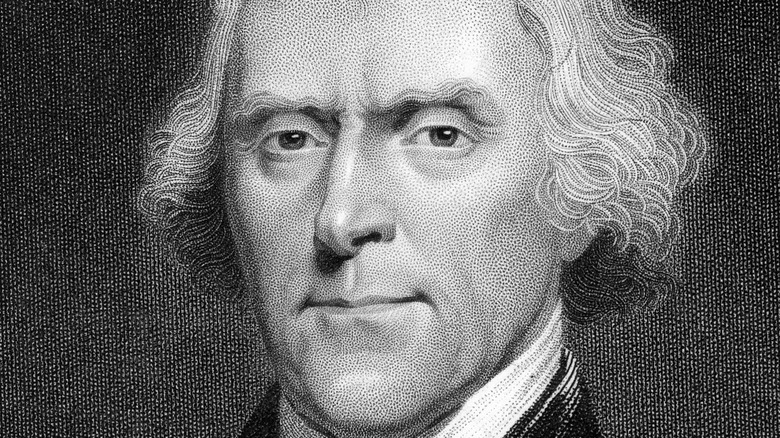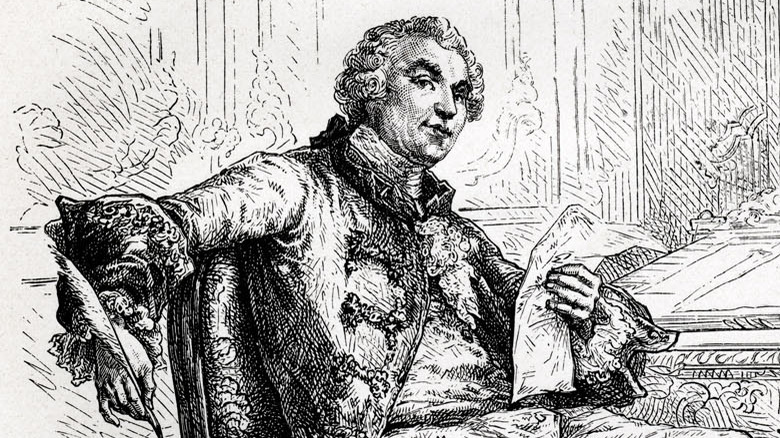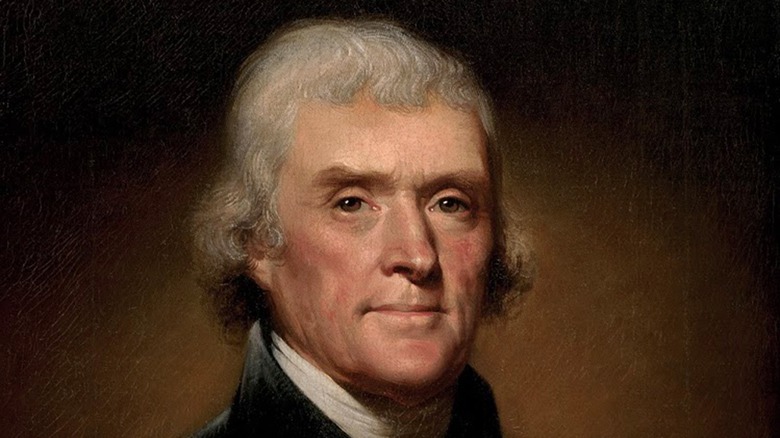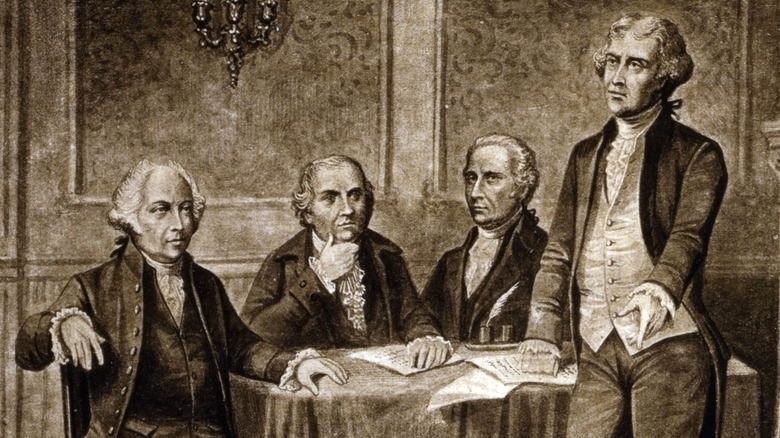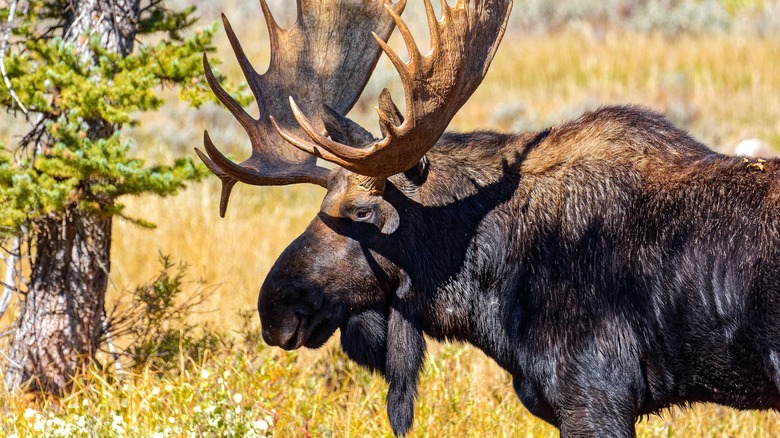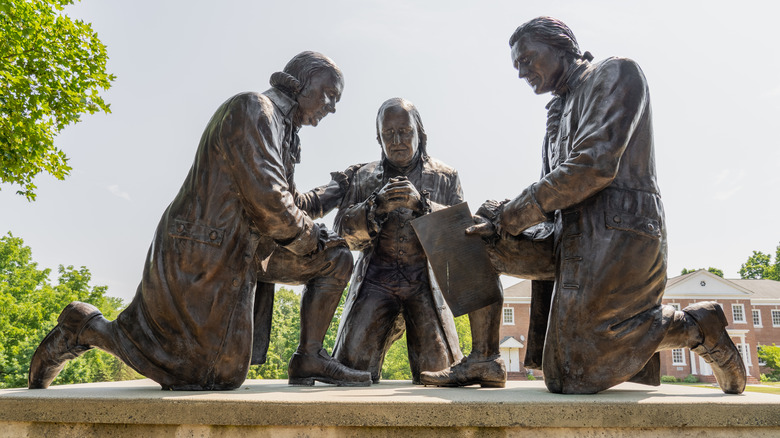Why Thomas Jefferson Once Requested A Dead Moose Be Sent To Him
The first Europeans who crossed the Atlantic Ocean and landed in the Americas were seen as "upstarts, malcontents, and threats to the monarchy" by many of the Europeans they left behind, according to Lee Alan Dugatkin's book "Mr. Jefferson and the Giant Moose: Natural History in Early America." But one French scientist named Comte Georges-Louis de Buffon took European superiority a step further by suggesting that not only were the early settlers of colonial America themselves inferior, but so were the region's plants and animals.
Although he had never crossed the pond, Buffon took it upon himself to write about the "flawed and fragile" nature of the country based on travel accounts he had read, according to NPR. Buffon ignorantly argued that Europe was equipped with a "drier, hardier, more bracing climate," while American wildlife was "smaller, more fragile and less diverse," because it was located in what he incorrectly thought was solid swampland, per NPR. Like many European elitists before and after him, Buffon completely ignored the rich history of Native cultures that had existed on these lands since time immemorial and just saw the land as a "degenerate" copy of Europe (via NPR).
Buffon's argument
According to American Scientist, Buffon's theory was based on a book by a Spanish naval officer named Don Antonio d'Ulloa. His theory might strike a chord with some of us today. d'Ulloa said in his 1748 book "Relación histórica del viaje hecho de orden de su Majestad a la América Meridional" that life here in the Americas had been diminished because of "a long history of colonialism, slavery, exploitation of natural resources and subjugation of the native peoples," per American Scientist.
But while d'Ulloa may have been talking about a diminished way of life in a more philosophical or spiritual sense, Buffon interpreted it quite practically. To prove that organisms on the other side of the pond were literally smaller, he claimed that various animals that existed on both continents were weaker in North America than the same animals in Europe. (Remember that this Buffon character had never set foot on North American soil himself.)
Jefferson's defense
Despite the fact that these settlers would eventually destroy the landscapes that Native American populations had lived in for centuries — ironically reducing the quality of the environment in the Americas, as Buffon accused — the newly-arrived Americans faced a steep blow to the ego when they heard that Buffon was doubting what they saw as a precious, promised land. Perhaps they were insecure that the land they were taking from Native peoples would never be as big and powerful as their European homeland, and the idea that the plants and animals there were somehow inferior did not sit well with them.
The future third president of the U.S., Thomas Jefferson, who at the time was the American ambassador of Paris, decided to prove Buffon wrong, coming to America's defense in a full-length book he published called "Notes on the State of Virginia" in 1785, according to American Scientist. According to the Monticello museum, it wasn't just a matter of ego; "The growth and prosperity of the new nation depended upon a positive image that would encourage immigration and commerce."
The evidence
From Paris, Jefferson sent letters to Benjamin Franklin, James Madison, and other diplomatic friends across the pond to ask them to hunt and measure various animals in the Americas to build a dataset that would later be published in his book, according to NPR. For example, Jefferson noted that a bear in America weighed 400 pounds, whereas one in Europe weighed 150 pounds. As for otters, these water mammals in America outweighed those in Europe by a solid three pounds. Obviously, Jefferson had something to prove and was reportedly "obsessed" with these measurements (via NPR).
According to the Monticello Museum, Jefferson argued that North American animals didn't just beat out European animals in size, but also in quantity. For example, "the number of quadrupeds found only in America is four times greater than those found only in Europe," he claimed (via Monticello Museum). He also adorned his entire house with dozens of bones, horns, and animal skeletons that he collected throughout his life (per Monticello).
Then there's the moose
But one animal was very important to Jefferson's case: the moose. Jefferson (wrongly) claimed that a European reindeer could easily walk underneath the belly of an American moose (via American Scientist). He spent "an inordinate amount of time imploring his friends to send him a stuffed, very large moose" to prove Buffon's idea of American inferiority wrong, according to Dugatkin's "Mr. Jefferson and the Giant Moose: Natural History in Early America."
Per NPR, it was the New Hampshire governor who eventually shot the moose that Jefferson was so fixated on capturing. According to Dugatkin, 20 men had to carry the huge dead animal out from the snow, pack it in crates, and transport it across the ocean to Jefferson. (As you can imagine, the sorts of preservatives they used to keep the carcass from rotting weren't exactly high-tech in colonial times.) In September 1787, the seven-foot moose was successfully delivered to Jefferson in Europe, and he sent it to Buffon along with his complete scientific defense (via Monticello). The efforts were so herculean that at Jefferson's funeral in 1826 one speaker said they nearly equaled a second American revolution (via Dugatkin).
The fruits of his efforts
In his book "Wild Ones," which describes Jefferson's moose-hunting journey, Jon Mooallem says the story exemplifies the persistent, pride-obsessed American trope, almost like "an early American Costanza" from "Seinfeld" (via NPR). But did Jefferson's efforts pay off, and did he successfully change the mind of European elitists like Buffon?
It would be nice to think so, but unfortunately this sort of degeneracy theory persisted politically, while also appearing in literature and philosophy. For example, this idea was prevalent in the philosophies of Immanuel Kant, as well as the writings of John Keats, who wrote that America was the place where "great unerring Nature once seems wrong" (via "Mr. Jefferson and the Giant Moose: Natural History in Early America").
According to American Scientist, we do know that the seven-foot moose was successfully delivered to Buffon's doorstep in October 1787. However, Buffon was sick and away at the time, and although he allegedly promised to "set these things right" in his next naturalist volume, he wasn't able to do so before he died (via American Scientist).
